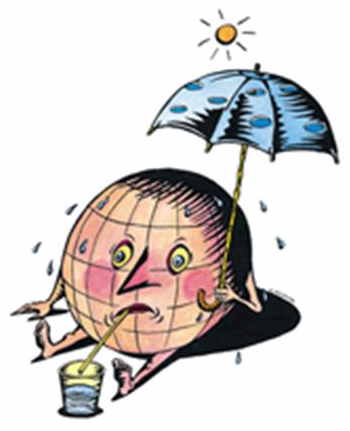China and India have aligned on similar interests to take on Russia and the EU in a game of policy Tug O’ War. China and India are pulling for a per $GDP CO2 emissions reduction policy while Russia and the EU are pulling for an absolute quantity cap in CO2 emissions. But why this opposition? What is behind this game of Tug O’ War?
Negotiations for the post Kyoto Protocol period are looking into new possible greenhouse gas emission limits. The two that will I will discuss are an absolute quantity cap (like the Kyoto Protocol) and an emissions reduction per $GDP basis. In general, developing countries are lobbying for per $GDP emissions standards, while countries who have developed are lobbying for an absolute quantity cap. Although both very different, they share the common end goal of trying to reduce global greenhouse gas emissions to slow global warming (here’s a clip on global warming: Global Warming 101).
Per $GDP emissions reduction: Also known as emissions intensity, is a measure of the increase in emissions in comparison to the economic growth of a country. In order to lower ones emissions intensity, a country must invest in greener ways of developing. Developing countries such as Japan and China are for this approach to emissions reductions because it allows them to continue to develop without being hindered by emissions reduction caps.
This approach does not guarantee an overall emissions reduction, which is necessary to slow down global warming. Factors such as population and the total increase in GDP, which could reverse the efforts in cutting emissions, are not taken into account.
Absolute Quantity Cap: An absolute quantity cap requires a cap in total emissions. For example, the cap in total emissions for the Kyoto Protocol was at levels before 1990 emissions.
The EU is for a cap in emissions because they already cap their emissions through has a domestic cap-and-trade system (the EU ETS).
Russia is also for an absolute cap system similar to that of the Kyoto Protocol where the emissions where capped at 1990 levels. After 1990, Russia went into a severe economic downturn and their emissions were reduced dramatically compared to the levels of 1990. Therefore, an emissions cap at the year 1990 allows Russia to develop back to its previous state of economy without being held back by emissions reductions.
The absolute quantity cap does not take into account the differences in population for each country. Countries with more people, may find this method unfair.
In the upcoming conference in Copenhagen this December of ’09, it has been predicted that China and India, and the EU and Russia will be butting heads in negotiating the forms of mitigating emissions. Although they share a common goal, each seems to be holding on strong. The question is who will win this game of Policy Tug O’ War? or will the international community be able to find some common ground?
Tags: Grace Lange, Kyoto to Copenhagen, mitigation, sustainable development

